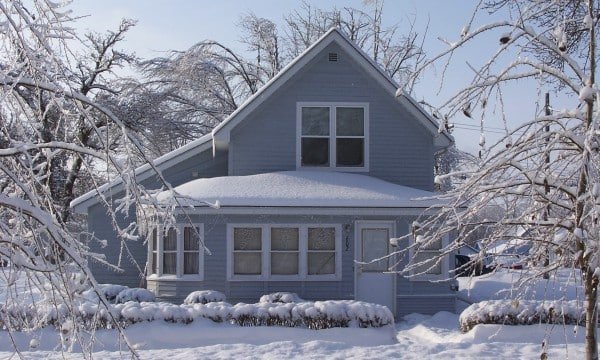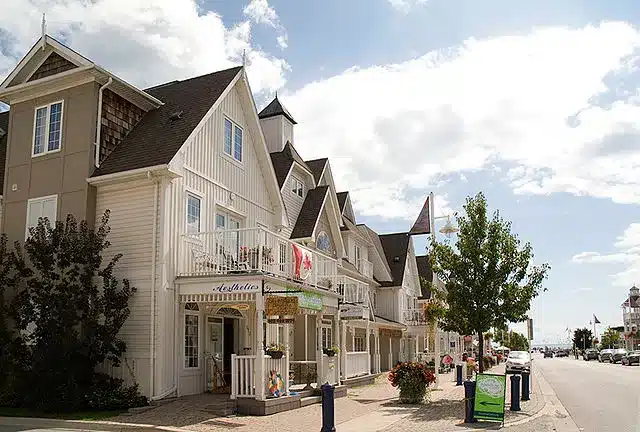As a dedicated service provider in the North York and greater Ontario moving landscape, Top Town Movers is committed to ensuring your transition is seamless, safe, and stress-free, regardless of the season. When a move coincides with the arrival of the harsh Canadian winter, a crucial step that often gets overlooked in the rush of packing is properly preparing your house for winter.
Whether you are selling your current North York home and need to protect your investment, or you are moving into a new property that needs to be secured against the elements, knowing how to adequately equip your residence for the cold is essential. The process of getting your house winter ready is not just about comfort; it is a critical measure to prevent costly damage from burst pipes, ice dams, and energy inefficiency.
- Learn More >>>>Moving Supplies Checklist
The Imperative to Prepare Your House for Winter in Ontario
The Ontario climate, particularly in the North York area, is known for its dramatic seasonal shifts, bringing frigid temperatures, heavy snowfall, and icy conditions. For a homeowner, this weather poses serious risks. Water damage from frozen, burst pipes is a common and expensive claim. Heat loss due to poor insulation can lead to exorbitant utility bills. And, in the context of moving, a home that is not properly secured can create hazards for the moving crew, leading to delays or injury. That is why the process of winterizing your home should be treated with the same priority as finalizing your move details with Top Town Movers. By taking proactive measures to prepare your home for the cold, you safeguard your property’s structural integrity and ensure peace of mind during your transition.
Synonyms for getting your house winter ready, such as winterizing your home, securing your property for the cold, equipping your residence for the freeze, preparing your dwelling for the deep winter, and making your home cold-weather secure, are all part of the essential vocabulary for any Ontario resident.
Section 1: Plumbing and Water System Protection
The single most critical aspect of winter house preparation is preventing frozen pipes. When water freezes, it expands, placing immense pressure on pipes and leading to bursts, which can flood your home and cause thousands of dollars in damage.
1.1 Secure Exterior Faucets and Hoses
Your first line of defense is at the exterior. Disconnect all garden hoses and allow any remaining water to drain completely. Critically, you must then shut off the water supply to all outdoor hose bibs. Most homes have an interior shut-off valve, typically in the basement or utility room. Once the valve is turned off, open the exterior faucet to drain the residual water from the pipe segment, leaving it open to allow any remaining moisture to escape. This single action is vital to equip your home for the freeze. If you have a sprinkler system, ensure it is professionally drained or “blown out” to remove all water before the ground freezes.
- Learn More >>>>Moving Timeline Checklist
1.2 Insulate Exposed Piping
In unheated areas, like basements, crawl spaces, garages, or cabinets under sinks against an exterior wall, water pipes are highly vulnerable. To make your home cold-weather secure, wrap any exposed pipes with foam pipe insulation, heat tape, or even layers of newspaper and duct tape. This insulation works to slow the transfer of heat, keeping the pipes warmer for longer and delaying freezing. If you are moving out and leaving the house vacant for a period, it is also advisable to leave cabinet doors open to allow warm air to circulate around the pipes.
1.3 Maintain Minimum Heat (Even When Vacant)
If you are moving out of your North York property and it will remain empty for a while, you absolutely must leave the furnace running. Many insurance policies require that you maintain a minimum temperature to prevent frozen pipes. Set the thermostat no lower than 13°C (55°F). This modest heat provides enough warmth within the walls and ceilings to keep piping above freezing. This is non-negotiable for anyone winterizing a home before a move.
- Learn More >>>>local moving company in Oakville
Section 2: Sealing and Insulation for Energy Efficiency
A significant part of the process to prepare your dwelling for the deep winter is ensuring your home retains the heat you are paying for. Proper sealing and insulation will not only make your home more comfortable but will also save you considerable money on heating bills, a benefit to both you and the future owners if you are selling.
2.1 Eliminate Drafts Around Windows and Doors
Inspect all windows and exterior doors for air leaks. Cold drafts are a major source of heat loss. Winterizing your home in this area involves simple fixes like replacing worn weather-stripping around doors and using caulk to seal small cracks around window frames. For older or drafty windows, consider applying a clear plastic window insulation film, which acts as a secondary layer of glazing and is easily removable in the spring.
2.2 Check and Augment Attic Insulation
Your roof is the area where the most heat is typically lost. Poor attic insulation can lead to a phenomenon called “ice damming,” where heat escaping through the roof melts snow, which then refreezes at the cold eaves, creating a barrier that causes water to back up and leak into your home. A key step to equip your residence for the cold is to check the depth and condition of your attic insulation. While this may be a larger investment, it is a crucial measure to secure your property for the cold and protect your roof’s integrity.
- Learn More >>>>milton senior moving company
2.3 Optimize Your Heating System
Before the first cold snap hits North York, have your furnace or boiler professionally serviced. A clean, well-tuned heating system runs more efficiently and is less likely to break down when you need it most. Change or clean your furnace filters monthly during the heating season to ensure maximum airflow and efficiency. Additionally, remember to reverse the direction of your ceiling fans to a clockwise rotation. This pushes warm air that rises near the ceiling back down into the room, helping to circulate heat and keep your living spaces comfortable—an easy, yet effective way of getting your house winter ready.
Section 3: Roof, Chimney, and Exterior Maintenance
When securing your property for the cold, you must look up. Damage to your roof and exterior drainage system can have cascading consequences once snow and ice arrive.
3.1 Gutter and Downspout Clearing
Clogged gutters are a primary cause of ice dams and water damage. Over the fall, leaves and debris accumulate, blocking drainage. When temperatures fluctuate, water pools, freezes, expands, and potentially damages the gutters themselves or the fascia. Therefore, a thorough cleaning is an absolute must to prepare your house for winter. Ensure downspouts direct water at least three to six feet away from your home’s foundation to prevent basement flooding when the snow melts.
3.2 Roof Inspection
From a safe distance (or by hiring a professional), inspect your roof for missing, cracked, or loose shingles. Repairing these minor issues now is significantly less costly than dealing with a major leak after a heavy snowfall. The goal is a water-tight barrier that will hold up against heavy winter precipitation—a fundamental step in equipping your residence for the freeze.
- Learn More >>>>500+ Things Gone | How To Declutter Like You Are Moving
3.3 Chimney and Fireplace Preparedness
If you have a wood-burning fireplace, scheduling a professional inspection and cleaning of the chimney before use is vital to prevent chimney fires. The inspection will also check the damper for proper function and ensure the flue is clear of any animal nesting or debris. Always ensure your home is equipped with working carbon monoxide detectors on every level, as fireplaces and furnaces increase the risk of carbon monoxide leaks. This simple check is a crucial safety measure when winterizing your home.
Section 4: Yard, Landscaping, and Outdoor Safety
Moving in the winter presents its own challenges, and Top Town Movers always prioritizes safety. However, the homeowner has a role to play in preparing the property and grounds.
4.1 Storing Outdoor Items
Patio furniture, grills, planters, and decorative items should be cleaned, dried, and stored in a garage, shed, or safely covered. Items left exposed to the elements are susceptible to freezing, cracking, and damage from high winds. This simple act of winterizing your home’s exterior prevents clutter and potential projectiles during a storm.
4.2 Tree and Shrub Pruning
Inspect all trees and shrubs near your house, particularly any overhanging branches. Heavy snow and ice accumulation can cause weak or dead branches to snap and fall, potentially damaging your roof, windows, or vehicles. Pruning these hazards away is an essential step in securing your property for the cold.
4.3 Prepare for Snow and Ice Removal
While Top Town Movers’ crew will take precautions, clear and safe pathways are essential on moving day. Stock up on ice melt, rock salt, and sand, and ensure your snow shovels are easily accessible—not buried in a packed-up box! Clearing snow and salting walkways not only minimizes slip-and-fall risks for your family but is a necessary preparation for your movers, ensuring an efficient and safe process when they come to load or unload your belongings in North York. This is an immediate, hands-on action to make your home cold-weather secure.
- Learn More >>>>The BEST House Moving Tips (and Mistakes to Avoid)!
Section 5: Moving in Winter: Top Town Movers’ Preparation
When the process of getting your house winter ready overlaps with your moving timeline, an extra layer of planning is required. Top Town Movers, serving the North York area and beyond, is experienced in executing smooth winter moves.
5.1 Utility Transfer Timing
If you are moving into a new home, ensure that utilities—especially the heat—are scheduled to be fully operational and turned on at least 24 hours before your movers arrive. Walking into a cold house will make the unloading process miserable for everyone and is a risk to any temperature-sensitive belongings.
5.2 Protecting Floors
On a snowy or slushy moving day, Top Town Movers’ crews come prepared to protect your floors, but you can assist by laying down flattened cardboard or old rugs at entryways. This will minimize the amount of snow, ice, and salt that is tracked into your old and new homes, protecting your floors and carpets—a proactive measure for equipping your residence for the cold transition.
5.3 Emergency Kit Accessibility
Ensure your winter emergency kit is easily accessible. This kit should include flashlights, batteries, a first-aid kit, warm blankets, and any immediate personal necessities. In the event of a power outage or unexpected delay, being prepared to keep warm and safe is paramount. This completes your personal and structural preparation to prepare your dwelling for the deep winter.
- Learn More >>>>Senior Moving Richmond Hill
Conclusion: Your Winter-Ready Move with Top Town Movers
The Ontario winter demands respect, and a diligent approach to home maintenance is crucial. The process to get your house winter ready—or securing your property for the cold—is an investment that saves you time, money, and hassle in the long run. By following this detailed checklist from Top Town Movers, you will have successfully navigated the key steps to make your home cold-weather secure, from protecting your plumbing to sealing drafts and maintaining your heating system.
Whether you are preparing a property for sale or settling into your new home in North York, these measures ensure your residence remains safe and efficient throughout the coldest months. When the time comes for your move, trust Top Town Movers to handle the logistics with the professionalism and care that only a local expert can provide, allowing you to focus on a warm welcome in your new, fully winterized home.

































